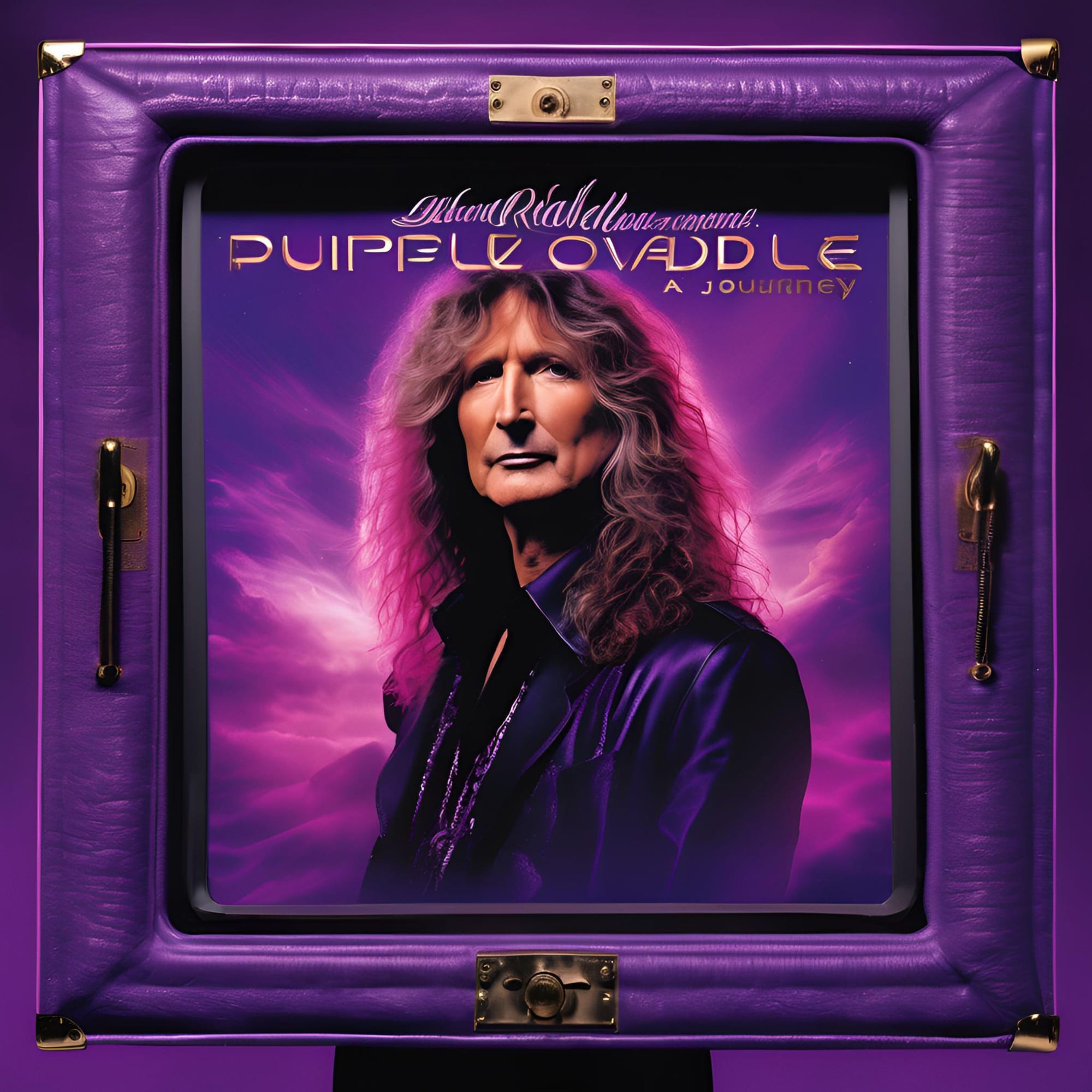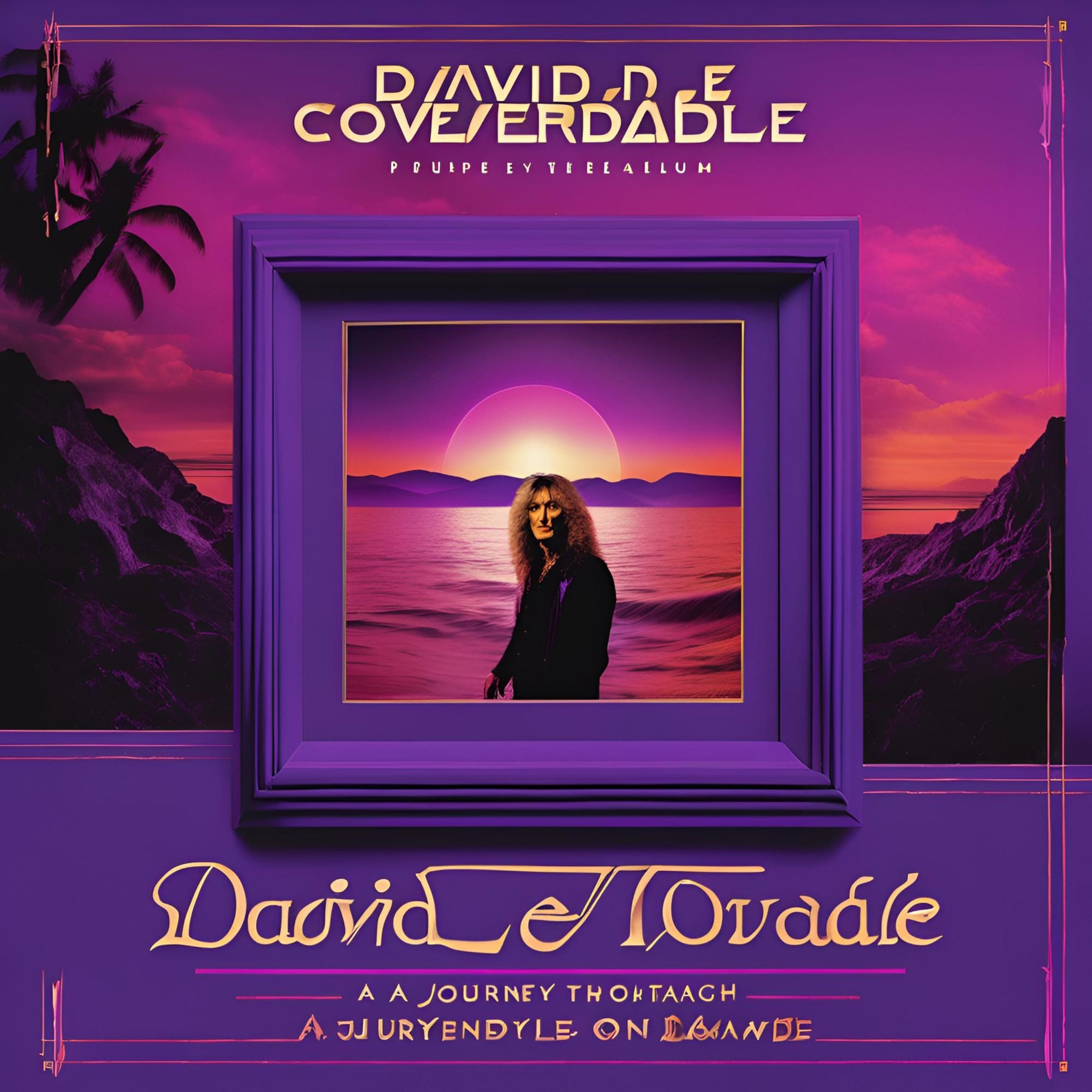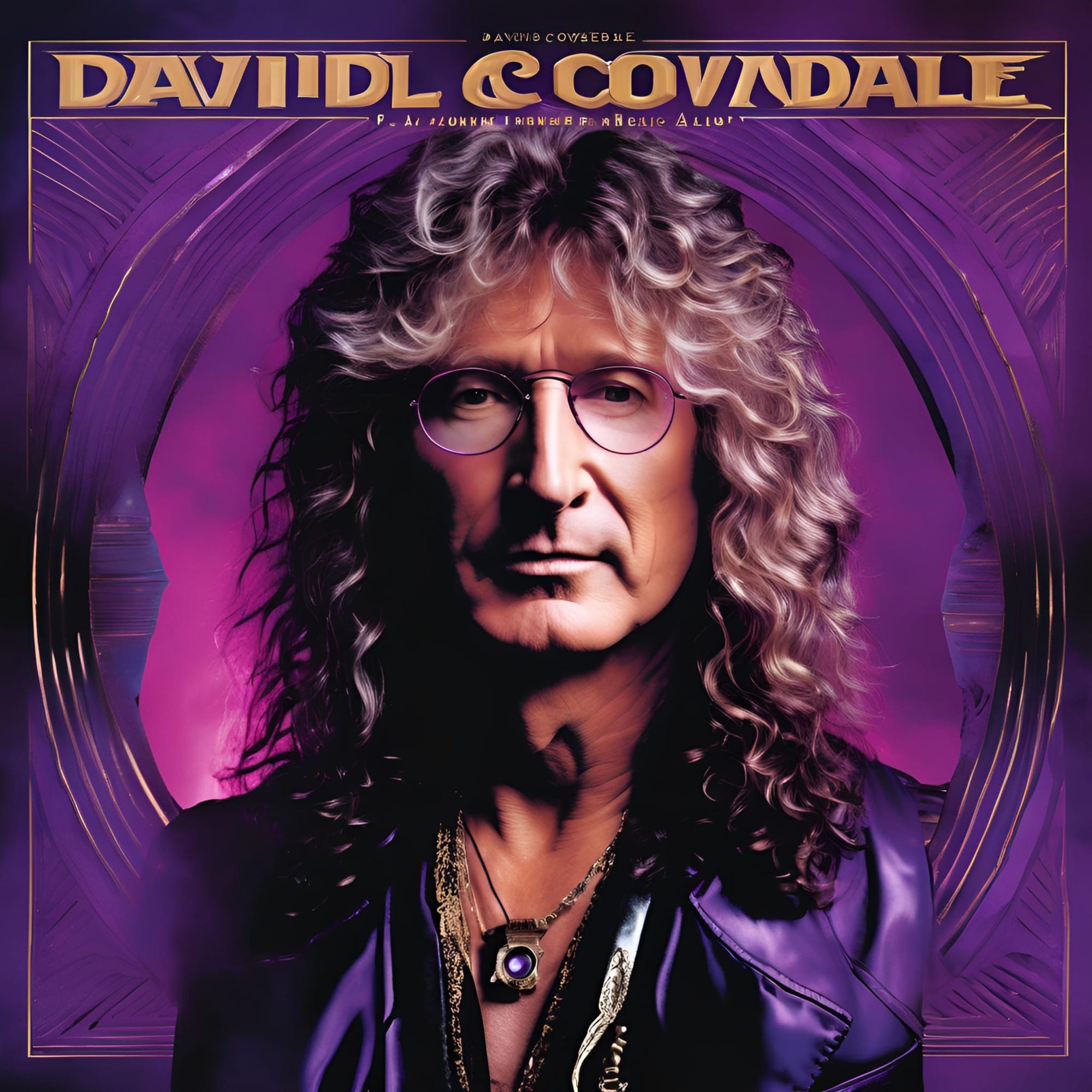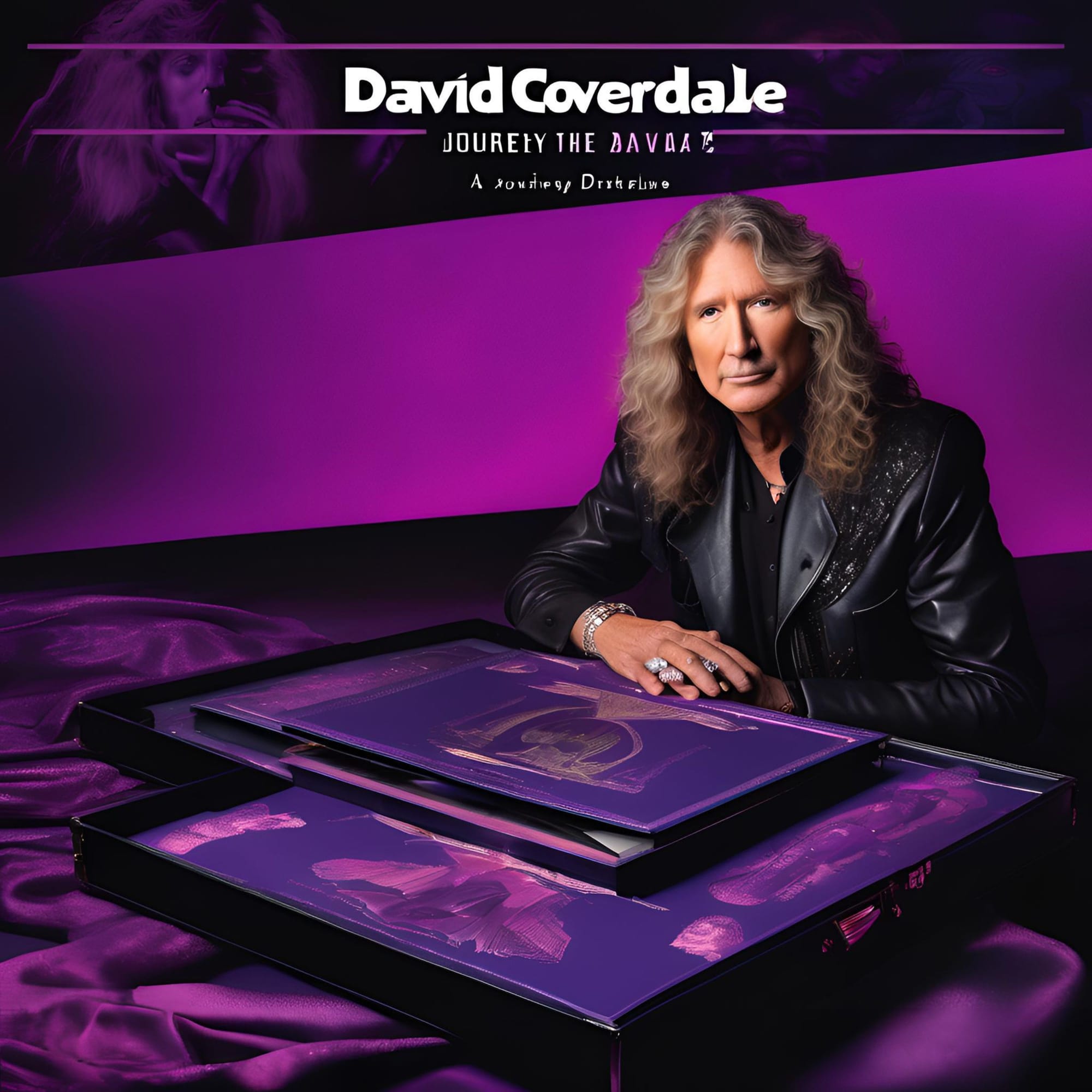"Unveiling David Coverdale's Purple Album: A Journey Through Legacy, Influence, and Musical Mastery"










buymeacoffee.com coming soon..
Introduction to David Coverdale and His Musical Journey
David Coverdale is one of rock music's most iconic vocalists, celebrated for his powerful voice and commanding stage presence. Born on September 22, 1951, in Norfolk, England, Coverdale’s musical journey began in the late 1960s, evolving into a rich tapestry of collaboration and innovation. His early career included a stint with the band The Government, but it was his role as the lead singer of Deep Purple in the early 1970s that truly catapulted him into the limelight. Coverdale's tenure with Deep Purple produced classic albums such as *Burn* and *Stormbringer*, showcasing his distinctive vocal style and establishing him as a formidable force in rock music.
After departing from Deep Purple in 1976, Coverdale embarked on a solo career that further solidified his reputation. His self-titled debut album, released in 1977, introduced listeners to his bluesy rock sound, featuring a blend of heartfelt ballads and hard-hitting tracks. However, it was the formation of Whitesnake in 1978 that led to his most significant commercial success. The band's fusion of hard rock and heavy metal, characterized by melodic hooks and emotive lyrics, resonated with audiences worldwide, resulting in a string of hit albums throughout the 1980s and 1990s.
Throughout his career, Coverdale has demonstrated versatility as a vocalist and as a skilled songwriter and producer. His ability to infuse his music with personal experiences and emotional depth has earned him a dedicated fanbase and critical acclaim. As he continues to evolve as an artist, Coverdale's journey reflects a commitment to authenticity and artistry, solidifying his status as a true legend in the world of rock music. The release of *The Purple Album* marks a significant chapter in Coverdale's storied career, paying homage to both his roots and the enduring legacy of Deep Purple.
Overview of The Purple Album
David Coverdale's *The Purple Album* serves as a tribute to his deep-rooted connections with the legendary rock band Deep Purple, where he first made his mark as a vocalist. Released in 2015, this album transcends being merely a collection of songs; it is a homage to the era that shaped Coverdale's artistry and influenced countless musicians.
Concept and Inspiration Behind the Album
The concept of *The Purple Album* stems from Coverdale's desire to honor the music he created during his tenure with Deep Purple in the early 1970s. Inspired by the classic rock sound and the profound impact of the band's music on his life and career, he aimed to reinterpret some of the most iconic tracks from this period. This project is not just a nostalgic glance back; it is a celebration of the melodies that have remained timeless. Coverdale often emphasizes how the music of Deep Purple helped shape his identity as an artist, making this album a personal journey of rediscovery.
Key Tracks and Their Significance
*The Purple Album* features a selection of reimagined classics, including standout tracks like "Burn," "Might Just Take Your Life," and "Soldier of Fortune." Each song is imbued with Coverdale's distinctive vocal style while still paying homage to the original arrangements. For instance, "Burn" showcases the raw energy that made the original a staple of rock music, while Coverdale's interpretation infuses it with a modern sensibility. Conversely, "Soldier of Fortune" highlights his emotive vocal delivery, capturing the song's poignant essence. This careful selection of tracks reflects not only Coverdale's musical heritage but also the emotional connection he has with these songs.
Collaborations and Contributions from Other Artists
In creating *The Purple Album*, Coverdale assembled a formidable lineup of musicians who contributed their talents to the project. Notably, guitarist Joel Hoekstra, who had previously collaborated with Coverdale in Whitesnake, played a crucial role in reshaping the album's sound. His virtuosic guitar work and fresh interpretations breathe new life into the classic songs. Additionally, the album features contributions from seasoned musicians, including bassist Michael Devin and drummer Tommy Aldridge, both of whom enhance the dynamic soundscape of the tracks. These collaborations not only elevate the music but also evoke a sense of camaraderie reminiscent of the spirit that characterized Deep Purple's original lineup.
Overall, *The Purple Album* stands as a testament to David Coverdale's enduring legacy and his dedication to preserving the music that has defined his career, while simultaneously inviting new listeners to experience the magic of Deep Purple's timeless classics.
Musical Style and Production
David Coverdale’s *The Purple Album* embodies a rich tapestry of musical styles, firmly rooted in classic rock while also embracing the modern sensibilities that have characterized Coverdale's long and varied career. The album serves not only as a tribute to Deep Purple, the legendary band that significantly influenced Coverdale’s own musical journey, but also as a showcase of his evolution as an artist.
Influences from Deep Purple
Deep Purple's musical legacy looms large over *The Purple Album*. Coverdale, who once fronted the band during its iconic *Burn* and *Stormbringer* eras, draws heavily from the classic rock elements that defined their sound. The album captures the essence of Deep Purple's blues-infused hard rock, characterized by powerful guitar riffs, dynamic organ melodies, and intricate arrangements. However, Coverdale injects his signature style, blending soulful rock vocals with the heavier instrumentation reminiscent of his days with the band. This interplay creates a nostalgic yet fresh listening experience, inviting both long-time fans of Deep Purple and newcomers to appreciate the evolution of the music.
Instrumentation and Arrangements
*The Purple Album* features a diverse array of instrumentation, reflecting Coverdale's commitment to crafting a rich and layered sound. The guitar work, primarily delivered by the formidable Doug Aldrich, showcases both crunching riffs and melodic solos that pay homage to the classic rock tradition while pushing the boundaries of modern rock guitar. The rhythm section, driven by bassist Michael Devin and drummer Tommy Aldridge, provides a solid foundation, allowing the songs to soar with intensity.
Additionally, the incorporation of keyboards adds depth to the arrangements, reminiscent of Jon Lord's iconic contributions to Deep Purple. The use of Hammond organ, piano, and synthesizers creates a lush sonic landscape that complements Coverdale's vocal prowess. The production, handled by Coverdale and longtime collaborator Martin "Ginge" White, ensures that each instrument is finely balanced, allowing the powerful vocals to remain at the forefront while still celebrating the collective contributions of the band.
Vocal Techniques and Performance Style
David Coverdale's vocal delivery on *The Purple Album* is a testament to his status as one of rock's most celebrated singers. His voice has matured over the decades, showcasing a blend of raw power and refined technique. Coverdale employs a variety of vocal styles throughout the album, from soaring high notes to gritty, bluesy growls, effectively capturing the emotional essence of each track.
In songs like "Burn," Coverdale channels the fiery spirit of his youth, delivering a passionate performance that resonates with both nostalgia and newfound vigor. Conversely, tracks such as "Stormbringer" highlight his ability to convey vulnerability, with softer, more introspective moments that allow his voice to shine in a different light. The dynamic range of his vocals serves as a reminder of why he remains a revered figure in the rock genre, continually captivating audiences with his ability to convey emotion through song.
Overall, the musical style and production of *The Purple Album* reflect not only David Coverdale's deep-rooted influences from Deep Purple but also his evolution as an artist. The careful blending of instrumentation, vocal techniques, and arrangements creates an album that stands as a celebration of rock history while also paving the way for future generations of musicians.
Reception and Impact of The Purple Album
Critical Reviews and Fan Response
Upon its release, *The Purple Album* garnered a mix of critical acclaim and enthusiastic fan response. Music critics praised Coverdale for his bold artistic choice to reinterpret classic Deep Purple songs through his unique lens. Reviewers highlighted the album’s production quality, noting how Coverdale managed to pay homage to the original tracks while infusing them with a contemporary flair. Many pointed to his powerful vocal performances as a standout feature, showcasing his enduring talent and ability to evoke emotion through music.
Fans, particularly those loyal to Coverdale's work with both Deep Purple and Whitesnake, embraced the album wholeheartedly. Social media buzzed with discussions and reactions, as supporters expressed joy at hearing familiar songs reimagined. The blend of nostalgia and fresh interpretations resonated well, leading to a sense of communal celebration among listeners who grew up with the originals. However, some purists voiced apprehensions about the reinterpretations, expressing concerns that the spirit of the original songs might have been overshadowed.
Chart Performance and Sales Figures
Commercially, *The Purple Album* demonstrated impressive performance on various charts worldwide. In the United States, it debuted in the top 20 of the Billboard 200, marking a significant achievement in Coverdale's career. Internationally, the album experienced similar success, securing positions in the top charts across Europe and beyond. Sales figures reflected the album's popularity, with it quickly achieving gold status in multiple countries. This strong commercial performance underscored the enduring appeal of Coverdale and his connection to rock music's legacy.
Legacy and Influence on Future Artists
The impact of *The Purple Album* extends beyond its immediate reception, influencing a new generation of musicians and artists. Its successful fusion of classic rock with modern production techniques has inspired contemporary rock bands to explore their own roots while making their sound relevant for today's audience. Coverdale's approach to reinterpreting classic tracks has encouraged artists to revisit their own influences, promoting a culture of appreciation for musical history intertwined with innovation.
Additionally, the album's success has sparked renewed interest in Deep Purple's catalog, prompting younger listeners to discover and explore the band's original work. *The Purple Album* serves as a bridge between generations, showcasing the timelessness of rock music and its capacity to evolve while honoring its past. As a significant chapter in Coverdale's storied career, the album not only reflects his artistic journey but also solidifies his status as a pivotal figure in rock music history.
Conclusion and Reflection on Coverdale's Career
David Coverdale's journey through the music industry is a testament to his enduring talent and adaptability as an artist. From his early days with Deep Purple to his successful solo career and tenure with Whitesnake, Coverdale has continually evolved while maintaining a signature sound that resonates with fans across generations. The release of *The Purple Album* represents not just a tribute to his roots but also a reaffirmation of his place in the pantheon of rock music.
*The Purple Album* serves as a pivotal moment in Coverdale's career, showcasing his ability to reinterpret and breathe new life into classic songs while introducing new audiences to the rich legacy of Deep Purple. With its careful blend of nostalgia and innovation, the album highlights Coverdale's mastery in crafting music that pays homage to the past while remaining relevant in the present. The emotional depth and vocal prowess displayed throughout the tracks illustrate why he remains one of the most respected voices in rock.
As we reflect on Coverdale's career, it is clear that his contributions extend beyond just the music. He has inspired countless artists and musicians, paving the way for future generations to explore and honor classic rock influences. Coverdale's ability to connect with his audience—both through heartfelt lyrics and powerful performances—ensures that his legacy will endure.
In conclusion, *The Purple Album* encapsulates not only a significant chapter in David Coverdale's illustrious career but also serves as a reminder of the timeless nature of great music. As he continues to tour and create, fans can look forward to more of his unique blend of passion and artistry, solidifying his status as a true rock icon.






Member discussion